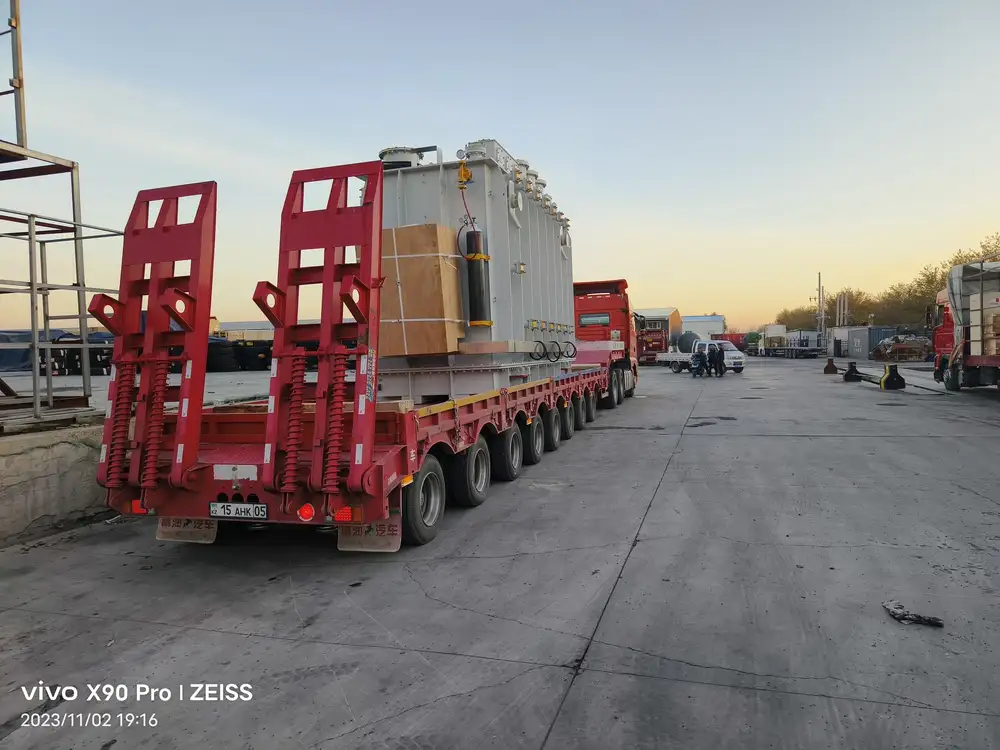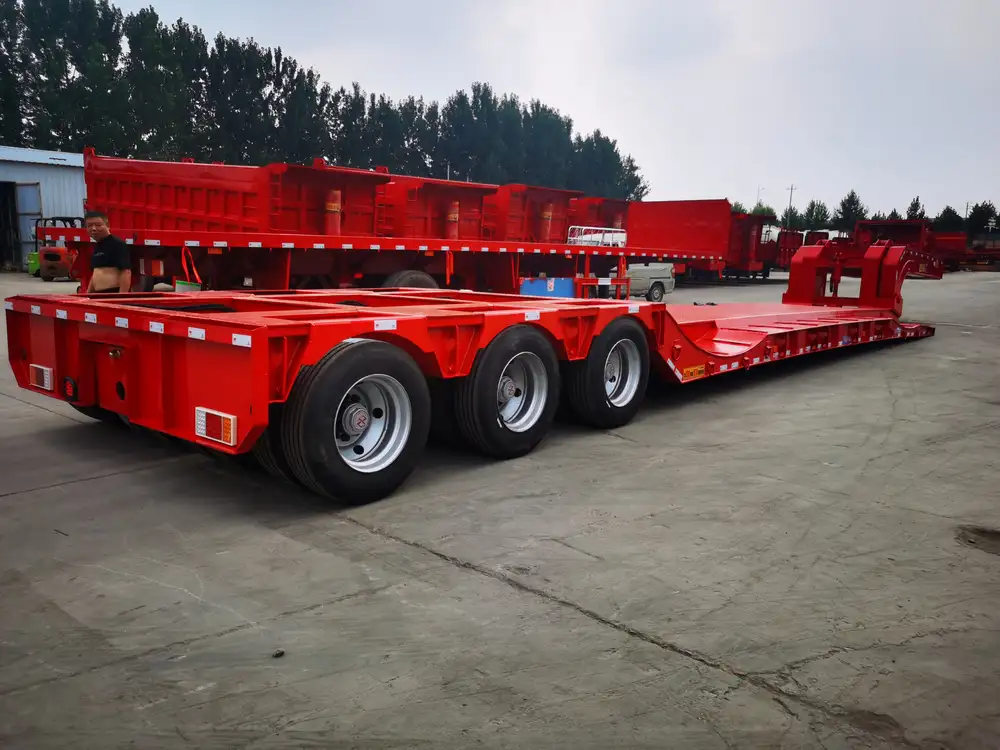Dump trailers are indispensable assets in various industries, from construction to agriculture. When contemplating the purchase or rental of dump trailers, a pivotal question arises: How many tons can a dump trailer carry? Answering this requires an in-depth exploration of trailer specifications, material load weight, and the overall hauling capacity specific to different types of dump trailers. This article will elucidate these details, helping you make informed decisions in your logistics, construction projects, or personal hauling needs.
What is a Dump Trailer?
A dump trailer is a specialized trailer designed for transporting bulk materials that need to be offloaded promptly. These trailers feature hydraulic lifting mechanisms to raise the trailer bed, allowing materials to be efficiently dumped at the desired location. Commonly used for transporting gravel, sand, mulch, or construction debris, dump trailers come in varying sizes and configurations, significantly influencing their hauling capacity.
Types of Dump Trailers
Understanding the types of dump trailers available is crucial for determining their capacities.
Single Axle Dump Trailers
- Capacity: Typically range from 2 to 5 tons.
- Best For: Smaller projects, residential tasks, or light landscaping jobs.
Tandem Axle Dump Trailers
- Capacity: Generally between 6 to 14 tons.
- Best For: Larger projects requiring additional support and stability, such as construction sites.
Tri-Axle Dump Trailers
- Capacity: Can hold from 14 to 25 tons.
- Best For: Heavy-duty applications, transporting significant quantities of materials, especially in commercial and industrial settings.

Key Factors Influencing Capacity
1. Trailer Size and Configuration
The physical dimensions of the dump trailer, including length, width, and height, directly correlate with its load capacity. Larger trailers are inherently capable of carrying more weight. A standard dump trailer, generally measuring 12 to 16 feet long with a width of 6 to 8 feet, can hold a considerable volume of materials, but the weight must stay within regulatory limits.
2. Material Type and Weight
Not all materials weigh the same. The density of the material significantly affects how much can be loaded into the trailer. For example:
| Material | Weight per Cubic Yard | Estimate for a Standard 14 Cubic Yard Trailer |
|---|---|---|
| Sand | 1.5 tons | 21 tons |
| Gravel | 1.6 tons | 22.4 tons |
| Topsoil | 1.2 tons | 16.8 tons |
| Mulch | 0.5 tons | 7 tons |

3. Regulatory and Legal Weight Limits
Each state has regulations delineating maximum weight limits for trailers on public roads. These limits typically range from 10,000 to 26,000 pounds for trailers, depending on the number of axles and the weight distribution of the vehicle. Understanding these limits is crucial for compliance and safety.
How to Calculate Capacity
When determining how many tons a dump trailer can carry, a fundamental formula can apply:
Hauling Capacity Formula
Capacity (in tons) = Trailer Volume (in cubic yards) × Material Weight (tons per cubic yard)
This equation guides users to estimate how much weight a given volume of material translates into, ensuring optimum loading without exceeding weight limits.

Example Calculation
Let’s say you have a tandem axle dump trailer with a capacity of 10 cubic yards and you intend to load it with gravel which weighs 1.6 tons per cubic yard:
- Capacity = 10 cubic yards × 1.6 tons/cubic yard = 16 tons
Best Practices for Loading
Distribute Weight Evenly: To enhance stability and ensure safer transportation, always distribute the load evenly across the trailer bed.
Obey Weight Regulations: Always adhere to local regulations concerning weight limits. This ensures safety on the road and avoids potential fines.
Avoid Overloading: Overloading can lead to excessive wear and tear on your trailer, increased braking distances, and potential liability concerns in accident scenarios.
Choosing the Right Dump Trailer
When engaging with heavy materials, selecting the right trailer becomes essential. Consider the following criteria:

1. Project Requirements
- Volume Needed: Assess the amount of materials to be transported and their type.
- Frequency of Use: Determine whether this is a one-time project or a regular need.
2. Vehicle Compatibility
Ensure that your towing vehicle is appropriately matched in terms of weight capacity and hitch type. Many dump trailers offer various hitch configurations—such as bumper pull or gooseneck—to suit different towing capacities.
3. Trailer Features
Investing in features that enhance functionality and safety is worthwhile:
| Feature | Benefits |
|---|---|
| Hydraulic Lift | Facilitates easier dumping of materials. |
| Side Extensions | Increases capacity for loose materials. |
| Ramps | Enables loading of equipment and vehicles. |

Common Uses of Dump Trailers
Dump trailers shine in several scenarios, including:
- Construction: Transporting heavy materials like concrete, bricks, or steel.
- Landscaping: Moving mulch, soil, and plants, contributing to efficient landscaping projects.
- Agricultural: Hauling feed, grain, or fertilizers to and from farms.
- Waste Management: Efficiently transporting debris and waste materials from cleanup projects.
Maintenance Tips for Longevity
Proper maintenance extends the life of your dump trailer and enhances its reliability. Here are essential maintenance activities:
1. Regular Inspections
Conduct routine checks of the structural integrity of the trailer. Look for rust, cracks, or any signs of wear on the frame and axles.

2. Check Hydraulic Systems
Hydraulic issues can hinder lifting capabilities. Regularly inspect hoses, pumps, and connections for leaks or damage.
3. Tire Maintenance
Ensure tires are inflated to the recommended pressure and check for uneven wear. Rotating and replacing tires as needed is vital for safety and performance.
4. Cleaning and Lubrication
After transporting materials, clean the trailer bed to prevent material buildup. Lubricate moving parts to prevent rust and ensure proper functioning.

Conclusion
When considering “how many tons in a dump trailer,” understanding the types, specifications, and essential calculations and regulations is key. Choosing the right dump trailer based on your specific needs not only enhances efficiency but also ensures compliance with safety regulations. Furthermore, maintaining the trailer properly promises longevity, thus safeguarding your investment. Armed with this information, you can confidently tackle your hauling endeavors, whether in construction, landscaping, or other industries reliant on effective transportation of bulk materials. Whether it’s a single axle for small projects or a robust tri-axle setup for large-scale jobs, selecting the right dump trailer paves the way for improved productivity and successful project completion.



